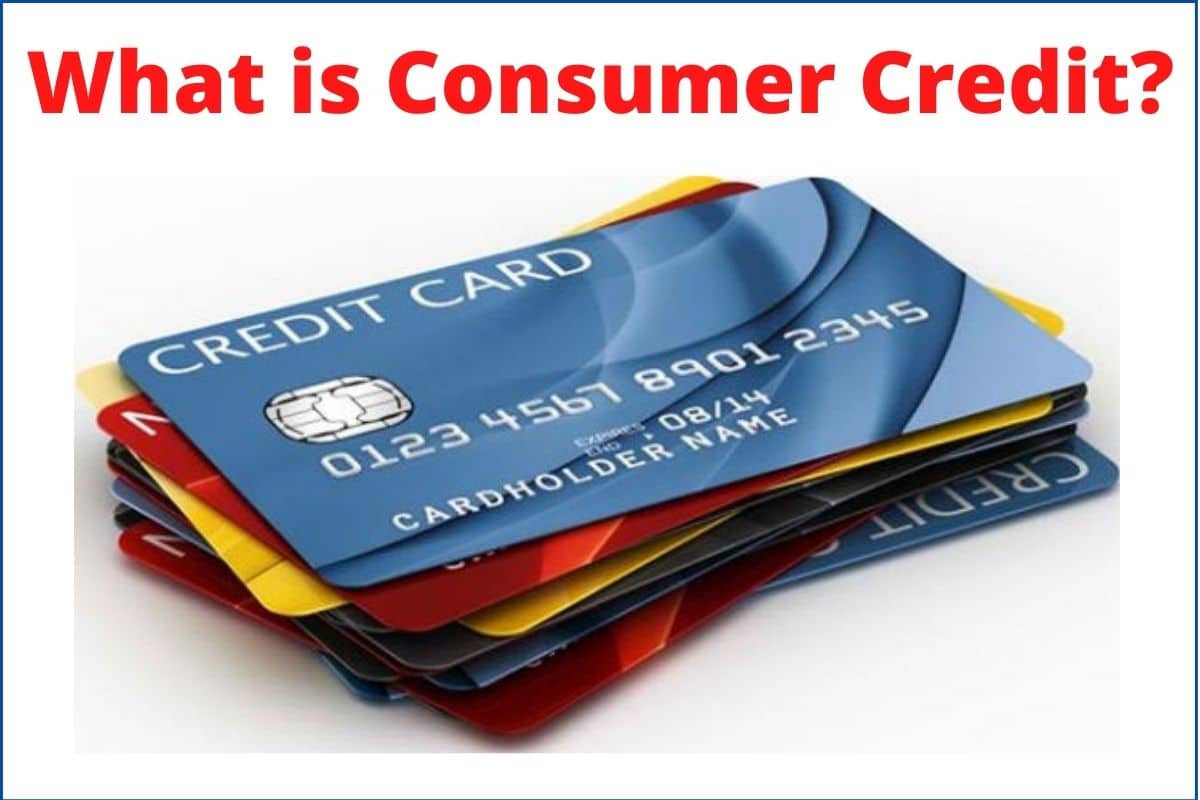What is Consumer Credit?
A consumer credit system allows consumers to borrow money and defer paying that money over time. Credit allows consumers to buy goods or assets without having to pay for them in cash at the time of purchase. It offers consumers flexibility in spending and, in some cases, benefits and rewards.
What is Basic Consumer Credit Score?
Credit score ranges and what they mean vary depending on the scoring model used, but they are generally similar to the following: 300-579: Poor. 580-669: Fair. 670-739:Ggood. 740-799: Extremely good.
Types of Consumer Credit
Retailers and larger financial organizations like credit card firms and banks both offer consumers credit. It encompasses all forms of consumer debt that enable instantaneous purchases and spread-out payments, typically with interest. It’s important to know the difference between the types of consumer credit.
1. Noninstallment Credit
Depending on the company that gives the loan, this type of consumer credit can be secured or not. This credit does not have fixed monthly payments and must be paid in one lump sum for the entire amount owed. Non-installation-related credits typically expire in a short period of time, eg. Eg B. in a month.
#2. Installment Closed-end Credit
The closed term credit allows the consumer to receive a certain amount of credit for the purchase of an article or some goods. One type of closed installment loan is a car loan. The car company offers credit to the consumer to buy the car. The credit does not exceed the sale price of the car. Also, the person pays the credit in installments over a period of time rather than repaying it in a lump sum.
#3. Revolving Open-end Credit
Indefinite revolving credit is the type of credit that a consumer would normally find on a credit card. The consumer has a certain amount of credit that he can use or not use at will. Then the consumer has to repay part of the credit that he used at the end of a period, usually one month. The balance will not be closed until the company offering the balance closes the account. Since it is not normally closed, the balance will rotate.
Revolving open credit requires active management by the debtor. The debtor can get rid of all of their debt by sending in their bank statement, paying more than the required minimum payment (but not the full amount), or just making the required minimum payment. The debtor can thus determine how much credit is available to him at any given time.
Other credit cards, such as travel and entertainment accounts with American Express or Diners Club, may have an outstanding loan amount, but the cardholder must pay off the balance within any period of time, usually every month.
How High Is the Maximum Credit Score Possible for a Consumer?
Credit scores over 760 may make you eligible for the greatest interest rates, according to research by credit agency Experian®. According to the two most widely used credit scoring methods (FICO and VantageScore), a credit score of 850 is the highest possible score.
How do I Apply for Consumer Credit?
Applying with a bank or credit card company is the first step toward obtaining consumer credit. Information about yourself is required for the application in order to confirm your identity and evaluate your ability to repay the loan.
What Loans are Covered by Consumer Credit Act?
It includes credit agreements like credit cards, personal cash loans, overdrafts, and store cards, as well as hire purchase agreements like leasing a car.
Sources of Consumer Credit
We all have short or long-term money or credit needs. You should familiarize yourself with your options as your credit needs arise.
#1. Commercial banks
Commercial banks make loans to borrowers who can repay them. Loans are the sale of the use of money by those who have it (banks) to those who want it (borrowers) and are willing to pay a price (interest) for it. Banks offer various types of credit, including consumer loans, home loans, and credit card loans.
Consumer loans are for installment purchases and are paid monthly with interest. Most consumer credit is for cars, boats, furniture, and other expensive durable goods.
Home loans can be for residential mortgages, home construction, or home improvements.
Credit card credit may be available in the form of cash advances within established credit limits.
#2. Savings and credit associations (S & Ls)
As illustrated in It’s a Wonderful Life, savings and loan associations specialize in long-term home loans for homes and other real estate. Today, the S&L offer personal installment loans, home improvement loans, second mortgages, education loans, and savings account loans.
S&L lends credit to creditworthy individuals, and collateral may generally be required. Loan rates for S & Ls vary based on the amount borrowed, the duration of the payment, and the collateral. S&L interest expense is generally lower than that of other types of lenders since S&L lend money from depositors, which is a relatively cheap source of financing.
#3. Credit Unions (CU)
Credit unions are non-profit cooperatives organized to serve people who have a common bond. Their lower cost generally allowss them to offer better loan and savings terms than commercial institutions. Credit union costs may be lower because sponsoring companies to provide staff and office space, and some companies agree to deduct loan and savings payments from members’ paychecks and apply them to bank accounts. Cooperatives of saving and credit.
Credit unions often provide good value for personal loans and savings accounts. UCs generally require less rigorous qualifications and offer faster loan service than banks or S&Ls.
#4. Consumer Finance Company (CFC)
Consumer finance firms specialize in personal installment loans and second mortgages. Consumers without an established credit rating can often obtain unsecured CFC loans. CFCs are often willing to lend money to consumers who have difficulty obtaining credit elsewhere, but because the risk is higher, the interest rate is higher.
The interest rate varies depending on the amount of the loan balance and payment schedule. CFCs process loan applications quickly, usually on the same day the application is submitted, and design payment plans tailored to the borrower’s income.
#5. Distribution Finance Company (SFC)
If you’ve bought a car, chances are you’ve had the option of financing the purchase through the manufacturer’s finance company. These SFCs allow you to pay for expensive items such as a car, large appliances, furniture, computers, and stereos over an extended period of time.
You don’t contact the SFC directly, but generally speaking, the trader will inform you that your installment slip has been sold to a sales finance company. Then you make your monthly payments to the SFC instead of to the dealer from whom you bought the goods.
#6. Life Insurance Company
Insurance companies generally allow you to borrow up to 80 percent of the accumulated cash value of a life insurance policy (or life insurance policy). Loans against some policies do not require repayment, but the balance that remains on the loan after your death is deducted from the amount your beneficiaries receive.
Paying back at least part of the interest is important because compound interest works against you. Life insurance companies charge lower interest rates than other lenders because they take no risk and pay no collection costs. Loans are guaranteed for the cash value of the policy.
#7. Pawnshops
Recently made famous by reality shows, lenders are unconventional but common sources of secured credit. They keep your property and give you some of its value. If you pay the loan and interest on time, your property will be returned to you. If you don’t, the lender will sell it, although an extension can be arranged. Pawnbrokers charge higher interest rates than other lenders, but you don’t have to apply or wait for the approval. The main attraction of pawn shops? They rarely ask questions.
#8. Loan Sharks
These predatory lenders are not approved by the state for the lending business. They charge excessive fees for refinancing, redemptions, or late payments and allow only a very short time for repayment. They are notorious for using collection methods that involve violence or other criminal behavior. Stay away from them. They’re illegal, after all.
#9. Family and Friends
Sometimes your family members can be your best source of credit. However, all of these transactions should be handled professionally. Otherwise, misunderstandings can arise that can ruin family ties and friendships.
Features of Consumer Credit: The five Cs of the Credit
The Five Cs of Credit is a system that lenders use to measure the creditworthiness of potential borrowers. The system weighs five characteristics of the borrower and the terms of the loan and attempts to assess the possibility of default and, consequently, the risk of financial loss to the lender. The five Cs of credit are character, capacity, capital, guarantee, and terms.
#1. Character
Although the first C is referred to as a character, it more specifically refers to credit history – a borrower’s reputation or repayment history. This information appears in the borrower’s credit report.
The credit reports produced by the three major credit bureaus – Experian, TransUnion, and Equifax – provide detailed information on how much an applicant has borrowed in the past and whether they have repaid loans on time. These reports also include information on collections and bankruptcies and retain most of the information for seven to ten years.
#2. Capacity
Capacity measures the borrower’s ability to repay a loan by comparing income to recurring debt and evaluating the borrower’s debt-to-income ratio (DTI). Lenders calculate DTI by adding the borrower’s total monthly debt payments and dividing them by the borrower’s gross monthly income. The lower an applicant’s DTI, the greater the chances of qualifying for a new loan. Every lender is different, but many lenders prefer a DTI of 35% or less of an applicant before approving an application for new financing.
It’s worth noting that lenders are sometimes prohibited from lending to consumers with higher DTIs. For example, to qualify for a new mortgage, a borrower generally needs to have a DTI of 43% or less to ensure that the borrower can comfortably pay monthly payments on the new loan, according to the Consumer Financial Protection Bureau. In addition to examining income, lenders examine how long an applicant has been employed at their current job and future job stability.
#3. Capital
Lenders also take into account any capital the borrower invests in a potential investment. A large contribution from the borrower reduces the probability of default. Borrowers who can, for example, pay a down payment on a home generally find it easier to obtain a mortgage. Even with special mortgages that aim to make homeownership accessible to more people, such as B. Loans guaranteed by the Federal Housing Administration (FHA) and the US Department of Veterans Affairs (VA). They require borrowers to collect between 2% and 3.5% on their homes. Down payments indicate how serious the borrower is, which can make it easier for lenders to extend credit.
The amount of the down payment can also affect the borrower’s interest rates and terms. In general, larger down payments lead to better rates and terms. For example, in home loans, a down payment of 20% or more should help the borrower avoid the need to purchase additional personal mortgage insurance (PMI).
#4. Warranty
The collateral can help a borrower obtain loans. This gives the lender the peace of mind that if the borrower defaults on the loan, the lender can get something back by withdrawing the collateral. Often collateral is the object for which the money is borrowed: for example, auto loans are secured by cars and mortgages by houses. For this reason, secured loans are sometimes called secured loans or secured debt.
Lenders generally consider their issuance to be less risky. As a result, loans that are secured by collateral are generally offered at lower interest rates and better terms than other forms of unsecured financing.
#5. Conditions
The terms of the loan, such as the interest rate and principal amount, influence the lender’s desire to finance the borrower. The terms can relate to how a borrower plans to use the money. Imagine a borrower applying for a car loan or a home improvement loan. A lender can approve these loans based on their specific purpose rather than a signature loan that can be used for anything. Additionally, lenders may consider conditions that are beyond the borrower’s control, such as B. the economic situation, industry trends, or upcoming legislative changes.
Is Consumer Loan Good for Credit Score?
A greater number of unsecured loans and credit cards will significantly lower your CIBIL score. Although late payments lower your CIBIL score, non-payments significantly lower your CIBIL ranking.
How do I Find my Consumer Credit Score?
Online: You should check out AnnualCreditReport.com. You could also dial 1-877-322-8228 to reach us by phone. Get in touch with the relay operator at 711 and have them connect you to 1-800-821-7232 for TTY assistance.
What are the Advantages of Consumer Credit
Loans in all their forms have both advantages and disadvantages for consumers and must be used responsibly for optimal benefit. Credit gives many of us the option of buying a car or a house with a mortgage and financial loans or paying for school or furniture with a credit card or even clothes when we don’t have cash but need to expand our closets. The responsible use of consumer credit benefits many people, but the irresponsible use of consumer credit leaves behind enormous debt and anxiety.
Importance of Consumer Credit
- Flexibility and convenience: Credit is useful for making purchases online or avoiding the need to carry large amounts of cash when shopping, renting a car, dining out, or for other entertainment purposes. Access to credit in an emergency, such as when the roof needs to be repaired or the car needs a new gearbox, is the only option that many people can afford.
- Rewards: Consumers can gain significant benefits from using credit if they are used wisely. Many department stores and auto dealerships offer their customers advantageous financing options, including late payments and low-interest rates. Credit cards often reward cardholders with cashback offers, frequent flyer miles, and reward points. For consumers who resist the urge to overspend and withdraw their credit accounts each month, these benefits and rewards mean free money.
What are the Disadvantages of Consumer Credit?
- Debt: Unfortunately, borrowing often encourages people to spend more than they earn, leading to debt. The diligence of a consumer in the use of credit and the ability to repay it determines the size of his debt, which can grow from hundreds to thousands of dollars in a short time.
- Financing costs: Credit means borrowing money that is not available to you. Such loans have a financing cost or a fee charged to the consumer for the privilege of borrowing that money. Finance or interest charges must be paid first when a person makes a payment through a line of credit, while the remaining amount of the payment is used to pay the full amount. Financing costs often absorb up to three-quarters of that payment, resulting in longer payment times for the borrower. Interest rates are based on the annual percentage of the card and a person’s credit or payment history. The better your credit rating, the better your chances of getting a lower interest rate.
What can I use Consumer Loan for?
Examples of consumer loans include mortgages for the purchase of a home, auto loans for the purchase of a car, and student loans for the funding of higher education.
What Is Consumer Credit Give an Example?
Consumer credit is the credit line that financial institutions offer to their customers for the purchase of goods and services. Credit card payments, consumer durables loans, and student loans are all common instances.
What Is Consumer Credit and Types of Consumer Credit?
Consumer credit is a personal finance instrument that allows you to pay for products and services. It is available from banks, shops, and specialized finance organizations. Consumer credit allows you to spread the cost of an item over numerous payments rather than paying it all at once at the time of purchase.
We Also Recommend:
- 15 Best Customer Retention Strategies That Increases Profits (guide)
- BABY BOOMER: Definition, History & Retirement
- Yield: Definition, Meaning, Types, and How to Calculate Yield
- MICROFINANCE LOAN: TOP COVID-19PICKS & HOW TO APPLY (+QUICK GUIDE)
- Best online payday loans: Top 10 companies in 2023
- FINANCIAL MARKET: All you should know with Practical examples (+ free pdfs)
- SECRET FACTS ABOUT TOP BRANDS 2023
- Yield Curve Theories
- BACK-TO-BACK LETTERS OF CREDIT: Examples, Advantages & Alternatives






